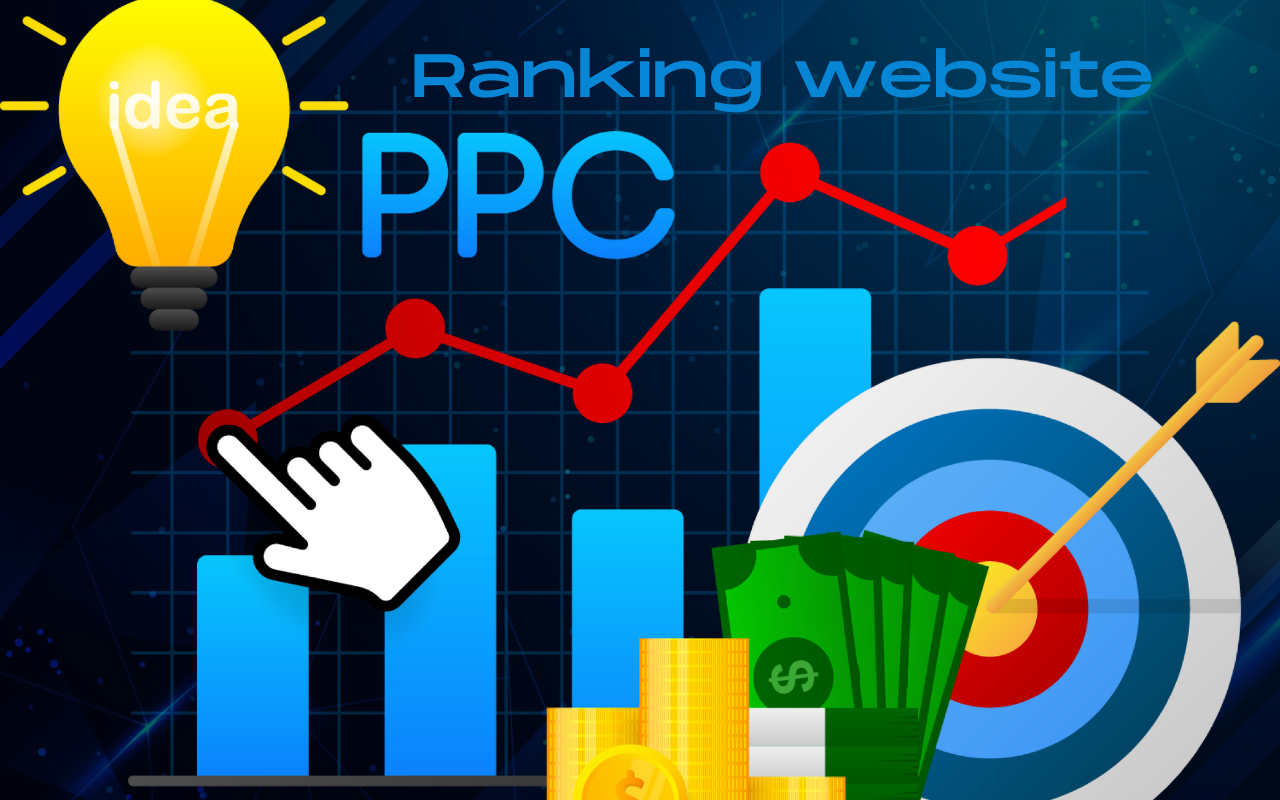In today’s hyper-competitive digital age, your website isn’t just an online presence—it’s the core engine of your business. Whether you’re a local shop, a growing startup, or an established enterprise, if your website isn’t optimized to rank high on search engines, you’re losing out on traffic, leads, and ultimately, revenue. But the good news? A custom ranking website can change everything.
Imagine seeing your business on the first page of Google, driving a steady stream of targeted visitors, and converting clicks into customers. That’s not a dream—it’s achievable, and I’m here to show you how.
This is your no-nonsense guide to building a custom ranking website that can dominate search engines and fuel your business growth.
1. Speed Is Non-Negotiable: Turbocharge Your Website
Did you know that 40% of visitors will abandon a website if it takes more than 3 seconds to load? A slow website is more than just a frustration; it’s a killer of conversions and rankings. Google cares about user experience, and if your site doesn’t load quickly, it won’t rank well. Period.
Here’s what you need to do:
- Optimize images: Large image files are the most common cause of slow load times. Use image compression tools like TinyPNG or ImageOptim to reduce file sizes without losing quality.
- Minify CSS and JavaScript: Bloated code can bog down your site. Use tools like CSSNano or UglifyJS to minify your CSS and JavaScript files.
- Leverage browser caching: Make sure returning visitors don’t have to reload your entire site. Set your caching rules so that static files are stored locally in the user’s browser for a set period.
- Use a Content Delivery Network (CDN): CDNs like Cloudflare distribute your site’s data across global servers, making it faster for users to access your content no matter where they are.
With these optimizations, you’ll have a lightning-fast website that not only pleases visitors but also earns brownie points with Google.
2. Target the Right Keywords: Your Precision SEO Weapon
Not all keywords are created equal. A well-optimized website begins with smart keyword research. This step alone can make or break your SEO strategy. Here’s how you can approach it like a pro:
- Understand user intent: Before diving into keyword tools, put yourself in your customers’ shoes. What are they searching for? Are they looking for information, a solution to a problem, or a product to buy? Understanding the intent behind search queries will help you focus on keywords that not only drive traffic but also convert visitors into customers.
- Use reliable keyword research tools: Tools like SEMrush, Ahrefs, and Google Keyword Planner give you detailed insights into which keywords your audience is using. Look for keywords with a good balance of search volume and low competition. Focus on long-tail keywords—specific phrases like “best SEO tools for small business” instead of just “SEO tools.” These terms may have lower search volume, but they’re easier to rank for and attract more qualified traffic.
- Spy on your competitors: A great way to find high-ranking keywords is by analyzing your competitors. Tools like Ahrefs or SpyFu allow you to see what keywords your competitors are ranking for, and you can adjust your strategy accordingly to capture their traffic.
Pro tip: Don’t just look for keywords with high search volume. Look for relevance. It’s better to rank for a keyword that aligns with your business than to chase high-traffic keywords that bring in irrelevant visitors who won’t convert.
3. Master On-Page SEO: The Backbone of Your Website’s Ranking
On-page SEO is critical for getting your website noticed by search engines. These optimizations ensure that Google understands your content and ranks it accordingly. Here’s how to optimize your on-page elements for maximum impact:
- Craft compelling meta titles and descriptions: Your meta title is the headline of your webpage in search results, and your description is the brief summary underneath. Make them irresistible. Use your primary keyword naturally within the title and description, but make sure the copy is click-worthy. A good title could be the difference between a user clicking on your link or scrolling past it.
- Use header tags strategically: Structure your content with H1, H2, H3 tags to organize the flow and improve readability. The H1 tag should include your main keyword and clearly define the page’s focus. Subheadings (H2, H3) should break up your content into digestible chunks while supporting the main topic.
- Optimize your URLs: Make your URLs clear, concise, and keyword-rich. For example, instead of “yourdomain.com/p=1234”, use “yourdomain.com/custom-ranking-website”. This makes your URLs more readable for both search engines and users.
- Don’t forget the alt text: Search engines can’t read images, but they can read the alt text you provide. Use descriptive, keyword-optimized alt text for all images to improve both accessibility and SEO.
On-page SEO might seem technical, but it’s the secret sauce that tells Google, “This is what my page is about—and it’s worth ranking.”
4. The Mobile-First Approach: Don’t Get Left Behind
With over 60% of all internet traffic coming from mobile devices, optimizing your website for mobile is no longer optional—it’s essential. Google’s Mobile-First Indexing means that your site’s mobile version is what Google considers first when ranking pages. If your website isn’t mobile-friendly, it’s time for an overhaul.
Here’s what to focus on:
- Responsive design: Make sure your website adapts seamlessly to any device or screen size. Tools like Google’s Mobile-Friendly Test can help you check how your site performs on mobile.
- Simplify navigation: Mobile users won’t tolerate confusing menus or tiny clickable areas. Make your navigation clean, intuitive, and touch-friendly.
- Optimize for speed: Mobile users are even more impatient than desktop users. Apply the same speed optimization principles, but pay extra attention to mobile-specific issues like optimizing for 4G speeds.
5. Leverage Internal Linking to Maximize Page Authority
Internal linking is an often underutilized SEO strategy that can drastically improve your rankings. By linking to other relevant pages on your website, you help Google understand your site’s structure and distribute ranking power (or link equity) across your pages. This is also a great way to keep visitors engaged with your content.
Here’s how to implement internal linking:
- Link to cornerstone content: Identify your most valuable pages—those that provide the best value to your visitors—and link to them frequently from other pages.
- Use descriptive anchor text: Don’t just use “click here.” Instead, use anchor text that includes relevant keywords and provides context about the linked page.
- Balance the links: Don’t overdo it by stuffing your pages with links. Keep it natural and only link where it adds value to the reader.
Internal links build authority across your site and guide visitors on a seamless journey through your content, increasing both rankings and user engagement.
6. Content is Still King: Create Value, Consistently
You’ve probably heard it a thousand times, but it’s still true: content is king. However, not all content is created equal. To boost your rankings, you need high-quality, valuable content that aligns with user intent and answers their questions better than anyone else.
Here’s how to make your content work for you:
- Focus on solving problems: Your content should directly address the pain points of your target audience. Whether it’s blog posts, videos, or guides, each piece should offer solutions and insights that are genuinely helpful.
- Create in-depth, comprehensive content: Longer, detailed articles (1,000+ words) tend to rank better because they cover topics thoroughly. But remember: quality over quantity. Don’t write long articles just for the sake of it—focus on being informative and actionable.
- Update content regularly: Keep your content fresh by updating older articles with new information, images, or keywords. Google loves regularly updated content and will reward your site for it.
Invest in content creation, and you’ll see the long-term benefits in both traffic and rankings.
7. Backlinks: The Power of External Endorsement
While internal links are critical, backlinks—links from other websites to yours—are one of the most powerful factors in Google’s ranking algorithm. When reputable websites link to your content, it signals to Google that your site is trustworthy and authoritative.
Here’s how to build high-quality backlinks:
- Guest posting: Write guest posts for reputable websites in your industry. Not only will you gain exposure to a new audience, but you’ll also earn a valuable backlink to your site.
- Build relationships: Network with influencers, bloggers, and other businesses in your niche. A strong relationship can lead to organic backlinks.
- Create link-worthy content: Publish infographics, research reports, and in-depth guides that others in your industry will want to link to.
Remember, it’s not about quantity—it’s about quality. A single backlink from a high-authority site can be worth more than dozens of low-quality links.
8. Measure, Analyze, Adjust: Track Your SEO Success
SEO is a long game, and the only way to know if your efforts are paying off is by tracking your progress. Use tools like Google Analytics and Google Search Console to monitor key metrics like traffic, bounce rate, keyword rankings, and click-through rates (CTR).
Here’s how to stay on top of your SEO strategy:
- Set goals and benchmarks: Before you start, define clear SEO goals—whether it’s increasing traffic, boosting conversions, or improving specific keyword rankings.
- Analyze performance regularly: Check your analytics weekly to spot trends and areas for improvement. Look for pages that are underperforming and make adjustments.
- Be flexible: SEO isn’t static. If something’s not working, don’t hesitate to pivot and try new strategies.
SEO success requires patience, persistence, and regular fine-tuning. Stay committed, and the results will follow.
Take Action Today
If your business is ready to grow, a custom ranking website is your secret weapon. By optimizing your site for speed, targeting the right keywords, mastering on-page SEO, and creating valuable content, you can rank higher, drive more traffic, and generate more leads.
There’s no magic to it—just proven strategies and consistent effort. So, stop letting your competitors dominate the search results. It’s time to take control of your SEO strategy and start seeing real results.
The future of your business depends on it.
Get started now—because the top of the search results is where your business belongs.




